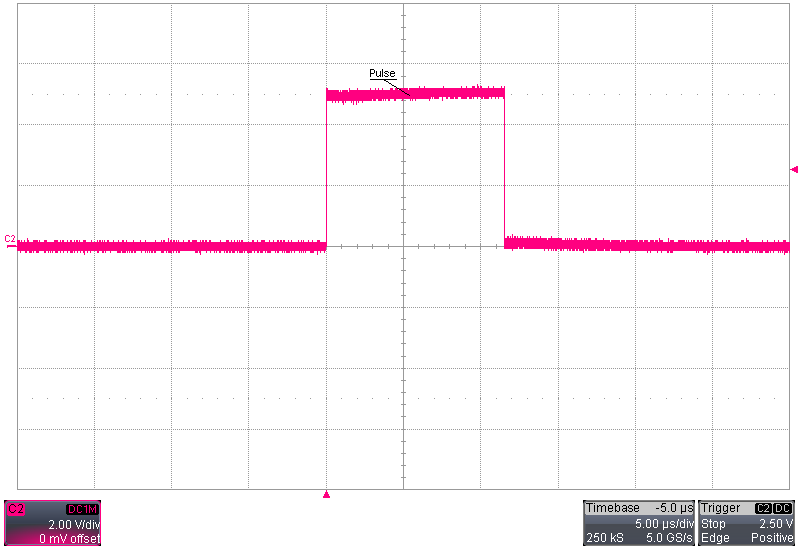TIDT293 October 2022
3.2 Pulse
When the board is powered, a pulse signal is generated when Pulse (S2) is pushed, or Free run (J6) is installed. Monitor Pulse (TP10) to maintain normal operation. All further scope plots in this user’s guide do trigger on the pulse signal, unless shown otherwise. The following scope plot shows the pulse signal.
 Figure 3-5 Measured Pulse Signal From
TP10
Figure 3-5 Measured Pulse Signal From
TP10